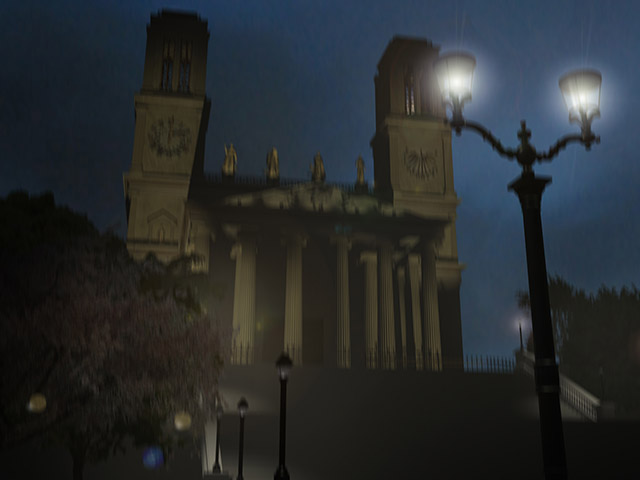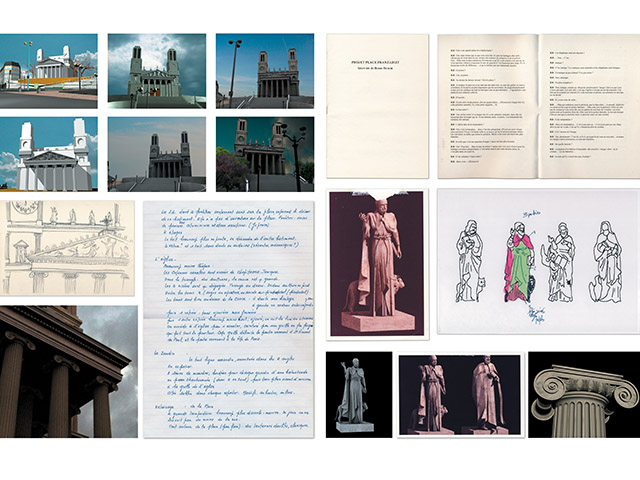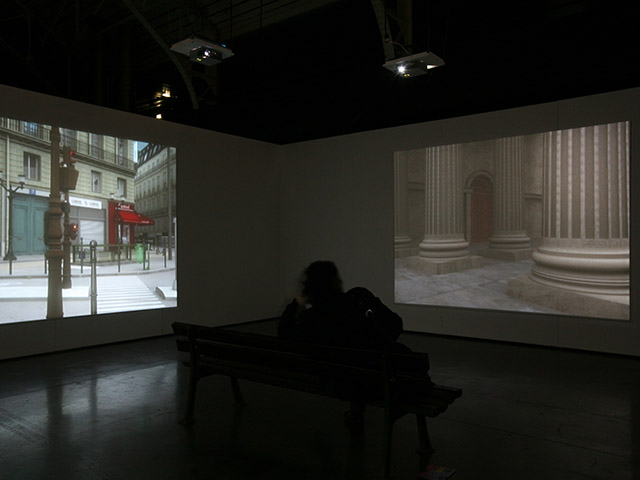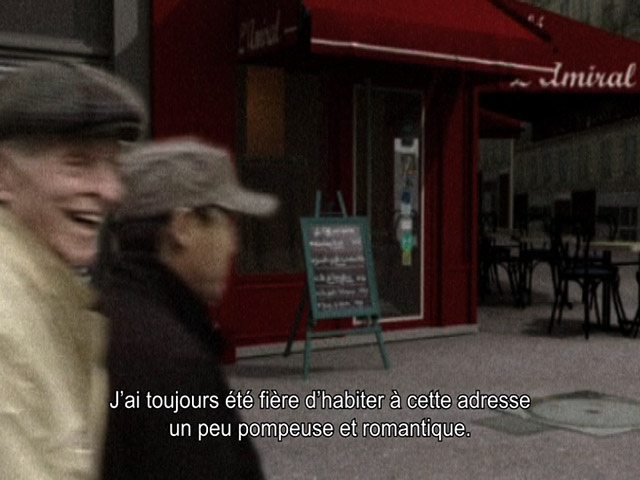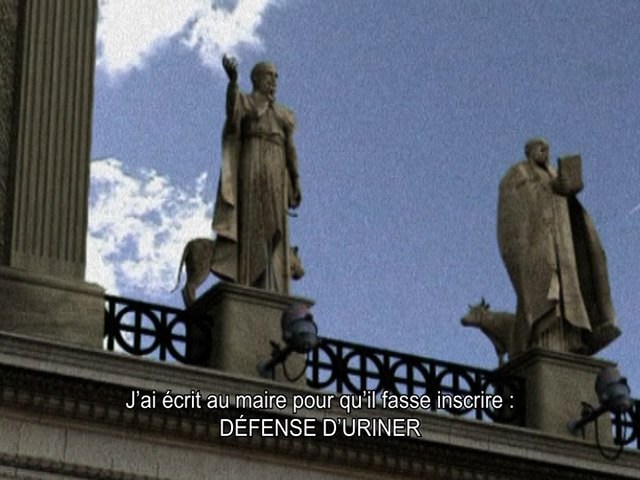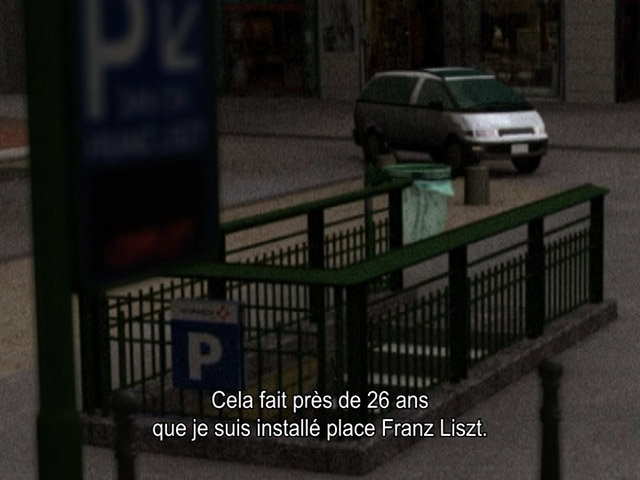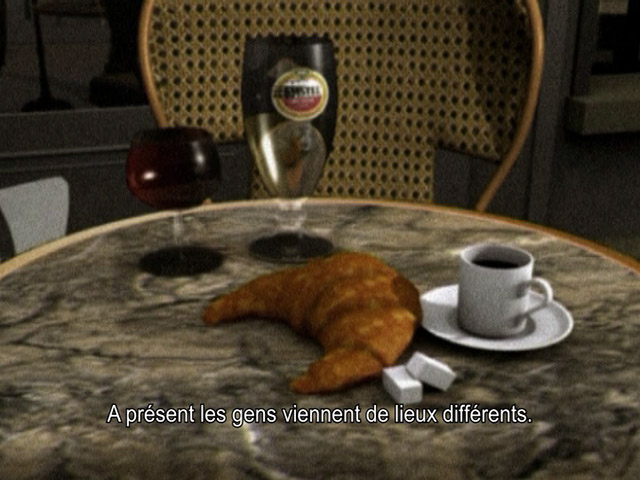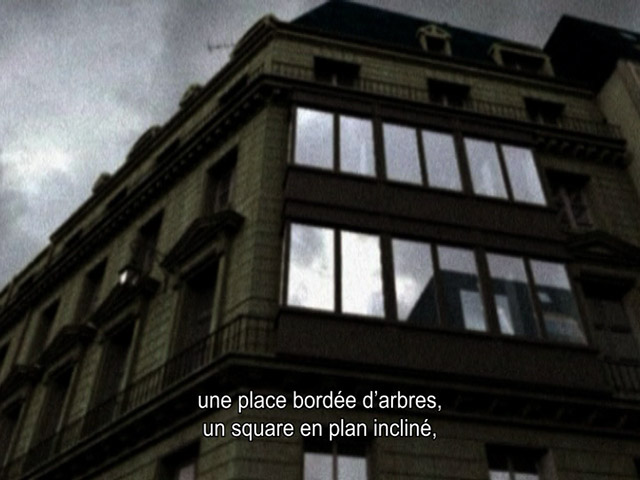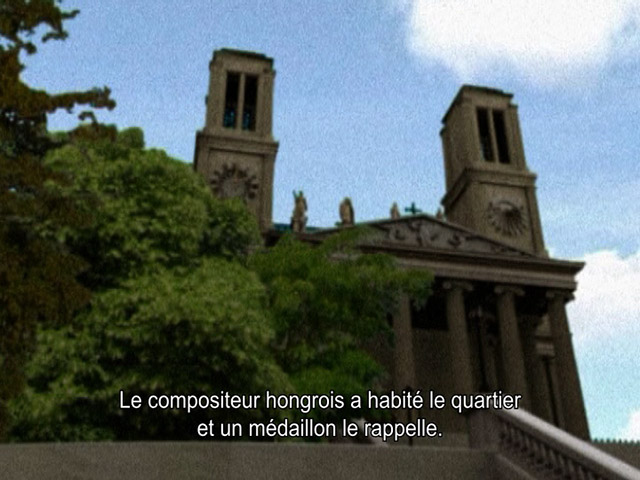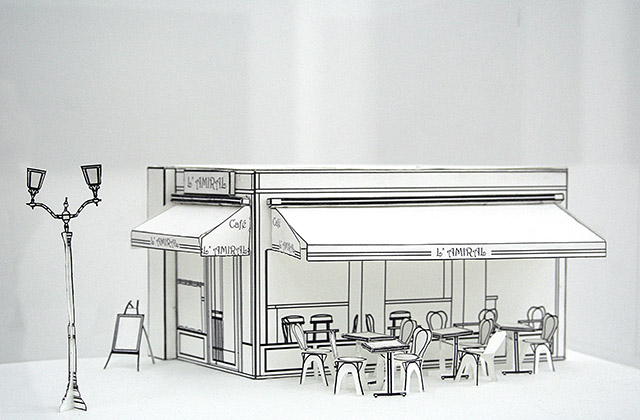|
Work in progress initiated in 2001. Mixed media : computer generated images, video screenings and video installations, drawings, paper models, texts... This projet is supported by DRAC Ile-de-France. This project originates from an experiment. I was wondering about the fact that almost everything I knew about the world did not come from my own experience but rather from second hand accounts. I initiated this project as a mean to probe the limits and the potentialities of this kind of mediate knowledge. How far can a mental image resulting from an indirect apprehension be accurate ? Is it possible to develop a kind of familiarity with a place only by going all over it in one's mind, without any involvement of the body ? In order to answer these questions, I decided to choose a place I had never been to nor seen any picture of, and then to try to imagine and represent it only basing on literal information previously gathered from its inhabitants. For some reason (mostly because I love the music of the composer it was named after) I chose Place Franz Liszt in Paris, a square located on the tenth district. First, I searched for the names and addresses of all the people who live there and I sent them a letter (Altogether that comes to approximately 300 letters). I explained my project in detail and asked them to participate in the experience by sending me their personal description of the square. I insistently asked them not to send photos or sketches but only texts. Since I didn't make any specific request about the kind of answer I was expecting, the letters I received were of a wide range of styles. Some were mainly technical descriptions with detailed inventories of the materials and street furniture; some focused more on the everyday life of the square, its activities and its evolution other the years; others evoked in a poetic way an atmosphere, a transient feeling associated with a moment of light or other subjective and almost ineffable impressions. Thanks to this fragmented description made of various and sometimes incompatible points of view, I was able to start imagining the place, to see it in my mind and to sense something about its aspect and its atmosphere. Then I was to make these mental images visible and thus to find a way to iron out the incoherences of these first impressions. It was very important for me to invent some new ways to represent. I wanted the experiment to be a pretext not to use images the usual way, as frozen forms or as snapshots, but to invent a sort of "representation in motion" that would reflect the plasticity of imagination. My wish was to create images that could transform in time like the different states of an engraving do or even go back on their words contradicting themselves. It resulted in a fragmented form, a complex installation that mixes drawings, CG images, paper models and videos all together. A series of documents shows the evolution of the reconstruction. The same building, the same part of the square, are seen according to several states. The videos focus on a more synchronic and sensitive approach. They reconstruct the square the way I imagine it at the time of the exhibition and let the viewer immerse himself in this urban fragment. Over time, a correspondence established with some of the inhabitants who answered my first letter. I sent them some of my CG images as postcards and they started commenting on these images. Thus, representation became a collective matter, resulting in a cycling process : a spontaneous apprehension evolves through its narrative construction, this narration is transposed in form of an image and then the image gives birth to yet another writing exercice. During this cyclic process, not only the reconstitutions but also the perceptions themselves get evolved. The "real" square remains as a referent but it appeares to be elusive and ever-changing, like an horizon that perpetually moves away as one tries to get closer. Consequently, one can wonder if the images and videos I produce depict a real, physical place or a more abstract entity, a purely dialogical object. In this respect, the real subject of my project is not the square itself but its many fictions the inhabitants diverse points of view and my own interpretation arouse. Lastly, the viewer himself add this chain his own subjectivity by creating a personnal mental image of place Franz Liszt out of the fragmented and voluntarily grainy and blurry images my installations show.
Back to top |
|
|

